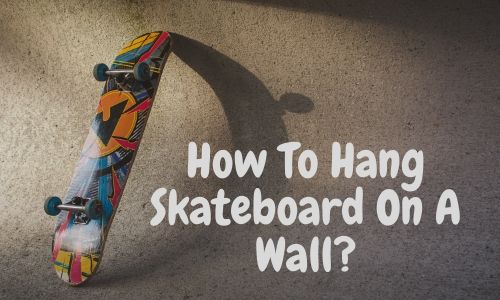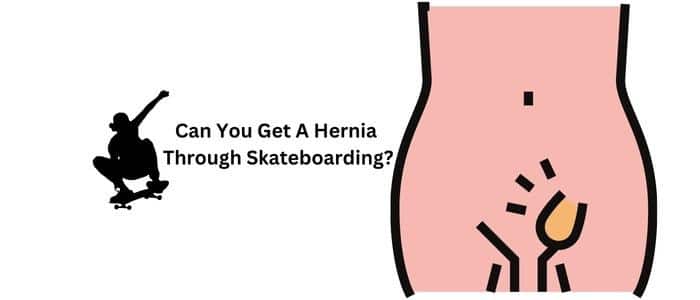Can You do Tricks on Street Skateboard? [Tips, Tricks & Improve]
( If you purchase through our sponsored links, we may receive a small commission at no extra cost to you )
Yes, street skateboarding is all about doing tricks and pushing the limits of what’s possible on a skateboard. From basic tricks like the ollie and kickflip to more advanced moves like the 360 flip and nose slide, there are endless possibilities for what you can do on a street skateboard.
Of course, performing tricks takes practice, skill, and lots of patience, but with dedication and determination, anyone can learn to do tricks on a street skateboard.
In this article, you will learn some basics, tricks, and other related topics to street skateboarding. So, hang on.
Street skateboarding originated in the 1970s in California, when skateboarders began to use the urban landscape as a canvas for their tricks and maneuvers.
Why Street Skateboarding is Popular?
Skateboarding is a popular sport that has evolved over the years, and there are different types of skateboarding that cater to different styles and preferences. One of the most popular types of skateboarding is street skateboarding, which involves performing tricks and stunts on urban obstacles such as stairs, rails, and ledges.
Street skateboarding is popular because it allows for a great deal of creativity and self-expression. Skaters can develop their own unique style and approach to tricks, and the urban environment offers a variety of challenges and opportunities for exploration. Additionally, street skateboarding is more accessible than other types of skateboarding, as it doesn’t require specialized equipment or facilities.
Components of Street Skateboard and Affect on Tricks
The basic components of a street skateboard include the deck, trucks, wheels, and bearings. The deck is the board itself, which can vary in size and shape depending on the skater’s preference. Trucks are the metal axles that attach the wheels to the deck, and they are adjustable to allow for different turning abilities. Wheels come in different sizes and hardness levels, which affect speed, control, and stability. Bearings are the small metal pieces that fit inside the wheels and allow them to spin.
Each of these components can affect trick performance in different ways. For example, a wider deck may be more stable for certain tricks, while a narrower deck may allow for more agility and quick movements. The tightness of the trucks can also affect turning ability, and the hardness of the wheels can impact speed and grip. Skaters often experiment with different combinations of components to find the setup that works best for their individual style and preferences.
Balance and Coordination on Street Skateboarding
Balance and coordination are essential skills in street skateboarding. Tricks often require quick movements and changes in direction, and skaters must be able to maintain their balance while performing these maneuvers. Additionally, many tricks involve jumping and landing on the board, which requires precise coordination and timing. Skaters can improve their balance and coordination through practice and training, as well as by developing their core strength and flexibility.
In summary, street skateboarding is a popular and accessible type of skateboarding that involves performing tricks and stunts on urban obstacles. The basic components of a street skateboard include the deck, trucks, wheels, and bearings, which can affect trick performance in different ways. Balance and coordination are crucial skills for street skateboarding, and skaters can improve these skills through practice, training, and physical conditioning.
Beginner Tricks for Street Skateboarding:
If you’re just starting out with street skateboarding, there are a few basic tricks that you can try to get a feel for the board and build your skills. Two popular beginner tricks are the ollie and the kickflip.
Ollie Trick
The ollie is the foundation for many other tricks, and involves jumping into the air with the board. To do an ollie, start by standing with your feet shoulder-width apart on the board. Bend your knees and crouch down, then quickly jump up and slide your front foot towards the nose of the board. As you do this, lift your back foot off the tail and level out the board in mid-air. Land with both feet on the board and roll away.
Kickflip
The kickflip is another beginner trick that involves flipping the board in mid-air. To do a kickflip, start with your front foot in the same position as for an ollie, but with your back foot angled slightly towards the tail of the board. Pop the tail of the board with your back foot, then kick your front foot forward and off to the side to flip the board. Catch the board with your feet as it completes the rotation, then land and roll away.
Tips and Suggestions for Practicing and Improving Trick Performance
When practicing these tricks, it’s important to start slow and focus on getting the basics right. Try practicing on a flat surface before attempting to do the tricks on obstacles. Once you feel comfortable with the basics, you can start to experiment with different variations and styles.
Here are a few tips to help you improve your trick performance:
- Keep your eyes focused on the board as you jump and perform the trick
- Practice your balance and foot placement to improve stability
- Build up your leg strength and endurance through exercises like squats and lunges
- Film yourself practicing so you can see where you need to improve and adjust your technique
- Don’t get discouraged if you don’t get it right away – trick skating takes time and practice, so keep at it and have fun!
Intermediate and Advanced Tricks for Street Skateboarding:
For experienced street skateboarders who have mastered the basics, there are a variety of more advanced tricks that can be attempted. Two popular advanced tricks are the 360 flip and the nose slide
360 Flip
The 360 flip is a combination of a kickflip and a 360 spin. To do a 360 flip, start in the same position as for a kickflip, but as you kick the board forward, use your back foot to spin the board 360 degrees. As the board completes the rotation, catch it with your feet and land. This trick requires precise timing and coordination, so it may take some practice to master.
Nose Slide
The nose slide is a trick where the board slides on its front wheels along a rail or ledge. To do a nose slide, approach the rail or ledge at an angle with your front foot slightly off the board. As you reach the rail, pop the board and slide the nose along the rail while keeping your back foot on the board. To exit the slide, shift your weight back onto the board and land.
Take Safety Precaution
When practicing advanced tricks, it’s important to take proper safety precautions and to build up to the trick gradually. Attempting a trick beyond your skill level can result in injury. Here are some tips to help improve trick performance at an intermediate or advanced level:
- Break the trick down into smaller components and practice each component individually before attempting the full trick.
- Visualize the trick in your head before attempting it, and focus on the key movements and timing.
- Practice on different types of obstacles to develop versatility and adaptability.
- Build up your core strength and flexibility to improve balance and control.
- Film yourself practicing to identify areas where you need to improve and refine your technique.
intermediate and advanced street skateboarders can challenge themselves with a variety of advanced tricks, such as the 360 flip and nose slide. These tricks require precise timing, coordination, and balance, so it’s important to take safety precautions and gradually build up to the trick. Practice, visualization, and physical conditioning can all help improve trick performance at this level.
Tips for Street Skateboarding and Tricks
Whether you’re just starting out or you’re an experienced street skateboarder, there are a few tips that can help improve your performance and keep you safe while skating.
- Wear Protective Gear: The most important tip for any street skateboarder is to wear proper protective gear. This includes a helmet, elbow pads, knee pads, and wrist guards. Protective gear can help prevent serious injuries and should always be worn when skating.
- Practice Good Foot Placement: Proper foot placement is key to performing tricks correctly and maintaining balance while skating. Make sure your feet are positioned correctly on the board for each trick, and practice your foot placement regularly to build muscle memory.
- Start Slow: When learning new tricks, it’s important to start slow and gradually build up your speed and intensity. Don’t attempt tricks beyond your skill level, and always practice on a flat surface before trying them on obstacles.
- Film Yourself: Filming yourself practicing can help you identify areas where you need to improve and refine your technique. Reviewing footage can also be a great way to track progress and set new goals.
- Mix it Up: Don’t get stuck doing the same tricks over and over again. Experiment with different obstacles and styles of skating to develop versatility and creativity.
- Practice Regularly: Consistent practice is key to improving your skills and mastering new tricks. Try to skate as often as possible, even if it’s just for a few minutes a day.
Other Ways to Improve your Street Skateboarding Skills
- Improve Your Balance: Balance is crucial for all skating, whether you’re doing tricks or just cruising. Practice balancing exercises like standing on one foot or balancing on a balance board.
- Strengthen Your Legs: Strong legs are essential for performing tricks and maintaining control while skating. Incorporate leg exercises like squats, lunges, and calf raises into your workouts.
- Work on Flexibility: Flexibility is important for maintaining balance and preventing injuries. Stretching regularly can help improve flexibility and range of motion.
By following these tips and practicing regularly, street skateboarders can improve their performance and reduce the risk of injury while skating.
Frequently Asked Questions
Can you do tricks on cheap skateboard?
Ans: Yes, it is possible to do tricks on a cheap skateboard, but it may not perform as well as a higher quality skateboard. A cheap low priced skateboard may have lower-quality components, such as wheels or bearings, which can affect its stability and durability.
However, it is still possible to learn basic tricks such as ollies, kickflips, and 180s on a cheap skateboard. As you improve your skills and become more serious about skateboarding, you may want to invest in a higher-quality skateboard with better components to improve your performance and safety.
What is the first skate trick?
Ans: The first skateboarding trick that many beginners learn is called the “ollie.” It is considered the foundation of most skateboard tricks and involves popping the tail of the skateboard down while simultaneously sliding your front foot up toward the nose of the board.
This creates a jump or “pop” that allows the skateboard to leave the ground without the use of your hands. The ollie was invented by Alan “Ollie” Gelfand in the late 1970s and has since become one of the most important tricks in skateboarding.
Conclusion
In conclusion, street skateboarding is an exciting and dynamic activity that offers skaters the opportunity to showcase their skills and push their limits. However, it’s important to remember that safety should always be a top priority when hitting the streets on your board.
In addition to the tips and tricks discussed in this post, there are many other resources available online for street skateboarders looking to improve their performance and master new tricks.
Be sure to check out other posts on our website for more information and inspiration on street skateboarding. And remember, never attempt dangerous tricks or ride in areas that are not safe or legal for skateboarding.
By practicing safely and responsibly, street skateboarders can continue to push the boundaries of their sport while enjoying the thrill of the ride.


![Where to Practice Skateboarding? [Get a Variety of Options]](https://sportstotry.com/wp-content/uploads/2022/08/8b6a92221b454113b2627b79a3e291dc-768x432.jpg)
![How to Pop a Skateboard? [5 Steps to Follow]](https://sportstotry.com/wp-content/uploads/2022/05/How-to-Pop-A-Skateboard.jpg)


![12 Best Skateboard Books In 2023 [Must Read & Listen!]](https://sportstotry.com/wp-content/uploads/2020/02/SKATEBOARDING-BOOKS.jpg)
![Can a 4-Year-Old Kid Ride a Skateboard? [Safety Consideration]](https://sportstotry.com/wp-content/uploads/2022/12/4-Year-Old-Aisha-Skateboarding.jpg)